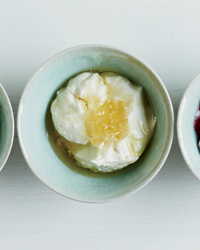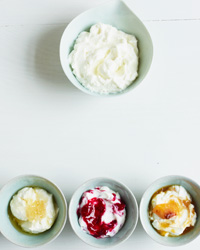“Making yogurt is all about getting two ingredients—a starter culture and milk—to interact in the right way,” says Ron Marks. A trained chef, Marks is the founder of AtlantaFresh Artisan Creamery, a company that recently began selling its thick, Greek-style yogurts throughout the South. Marks explains that a starter culture is a mixture of live, active bacteria that consume lactose, producing lactic acid (which creates a tangy flavor) as it transforms milk into yogurt. The trickiest part of the yogurt-making process is making sure that the cultured milk stays at the right temperature, between 105 and 110 degrees Fahrenheit. An electric yogurt maker simplifies the task, but you can improvise by setting the cultured milk near a warm radiator, in a slow cooker or even in an oven. After that, it’s just a matter of time—anywhere from five to 18 hours. Here, Marks provides two options for making yogurt at home and shares several of his favorite toppings.
This recipe adds live, active bacteria to milk by using either store-bought yogurt or, for the best result, powdered yogurt culture.
“High-quality milk that isn’t ultra-pasteurized will produce a better, more complex-tasting yogurt,” Ron Marks says.
“A pH meter can be your best friend,” says Marks. He suggests one from Hanna Instruments ($30; amazon.com).

In a bowl, stir together 1 cup yogurt with 4 tablespoons warmed wildflower honey.
Another idea for yogurt: Gail Simmons braises merguez and chickpeas in chicken stock and tops the dish with harissa-spiced Greek yogurt and mint.

How to make delicious homemade yogurt. Photo © John Kernick.
No comments:
Post a Comment